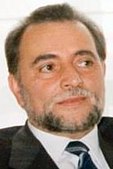| |||||||||||||||||||||||||||||||||||||||||||||||||||||||||||||||||||||||||||||||||||||||||
All 109 seats in the Parliament of Andalusia 55 seats needed for a majority | |||||||||||||||||||||||||||||||||||||||||||||||||||||||||||||||||||||||||||||||||||||||||
|---|---|---|---|---|---|---|---|---|---|---|---|---|---|---|---|---|---|---|---|---|---|---|---|---|---|---|---|---|---|---|---|---|---|---|---|---|---|---|---|---|---|---|---|---|---|---|---|---|---|---|---|---|---|---|---|---|---|---|---|---|---|---|---|---|---|---|---|---|---|---|---|---|---|---|---|---|---|---|---|---|---|---|---|---|---|---|---|---|---|
| Opinion polls | |||||||||||||||||||||||||||||||||||||||||||||||||||||||||||||||||||||||||||||||||||||||||
| Registered | 4,824,849 | ||||||||||||||||||||||||||||||||||||||||||||||||||||||||||||||||||||||||||||||||||||||||
| Turnout | 3,412,797 (70.7%) | ||||||||||||||||||||||||||||||||||||||||||||||||||||||||||||||||||||||||||||||||||||||||
| |||||||||||||||||||||||||||||||||||||||||||||||||||||||||||||||||||||||||||||||||||||||||
 Constituency results map for the Parliament of Andalusia | |||||||||||||||||||||||||||||||||||||||||||||||||||||||||||||||||||||||||||||||||||||||||
| |||||||||||||||||||||||||||||||||||||||||||||||||||||||||||||||||||||||||||||||||||||||||
The 1986 Andalusian regional election was held on Sunday, 22 June 1986, to elect the 2nd Parliament of the autonomous community of Andalusia. All 109 seats in the Parliament were up for election. The election was held simultaneously with the 1986 Spanish general election.
The former president of the Regional Government of Andalusia Rafael Escuredo had been replaced in the post by José Rodríguez de la Borbolla in March 1984. Escuredo's resignation had been forced by his party, the Spanish Socialist Workers' Party (PSOE–A), allegedly over a scandal involving a chalet owned by Escuredo that was claimed to have been built with preferential treatment by Dragados; in reality, Escuredo's demise was a result of tensions with the central government of Felipe González over transfer of regional powers, his agrarian reform proposal and a perception that Escuredo's style was growing increasingly nationalist.[1][2]
The election saw Rodríguez de la Borbolla's PSOE–A renew its mandate, albeit with a slightly reduced majority. The dissolution and subsequent disappearance of the Union of the Democratic Centre (UCD) paved the way for the right-wing People's Coalition—the electoral alliance of the People's Alliance (AP), the People's Democratic Party (PDP) and the Liberal Party (PL)—to amalgamate around itself most of the centre-right vote in Andalusia, but at 22.2% and 28 seats this still placed it well below the PSOE–A's score. In contrast, the left-wing United Left–Assembly for Andalusia (IU–CA), the Communist Party of Spain (PCE)-led coalition formed in Spain in the aftermath of the NATO membership referendum held on 12 March, achieved a major electoral breakthrough under the candidacy of former Córdoba mayor Julio Anguita, scoring almost 18% of the share, 19 seats and coming within a three-point margin of becoming the most voted political party in the Córdoba constituency.
Cite error: There are <ref group=lower-alpha> tags or {{efn}} templates on this page, but the references will not show without a {{reflist|group=lower-alpha}} template or {{notelist}} template (see the help page).
- ^ Machuca, Félix (16 February 2014). "Los días finales de Rafael Escuredo". ABC Sevilla (in Spanish). Retrieved 23 January 2022.
- ^ Fernández, Pepe (22 May 2018). "El chalé de Escuredo que cambió la historia política de Andalucía". Confidencial Andaluz (in Spanish). Retrieved 23 January 2022.


